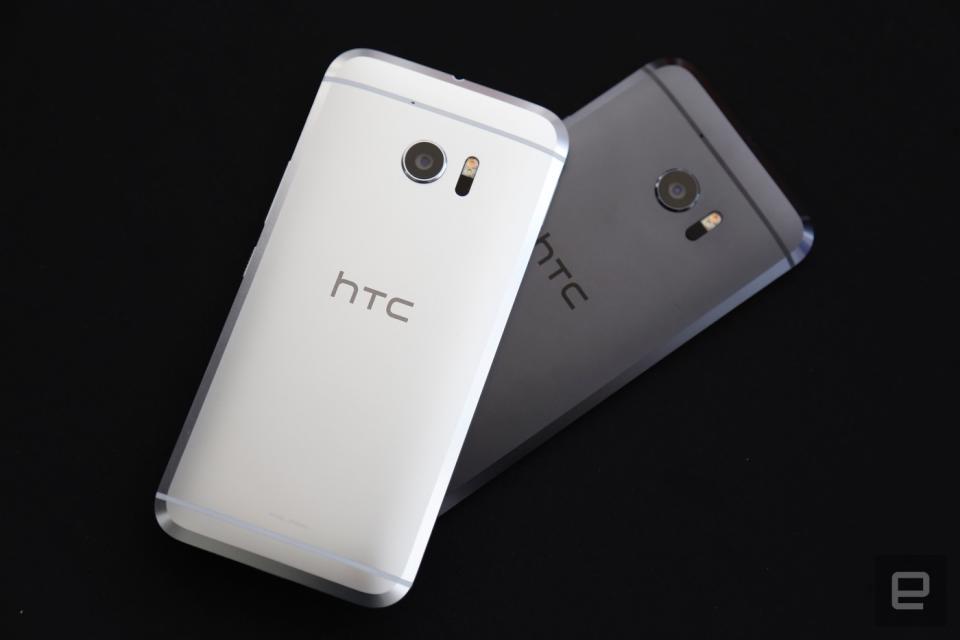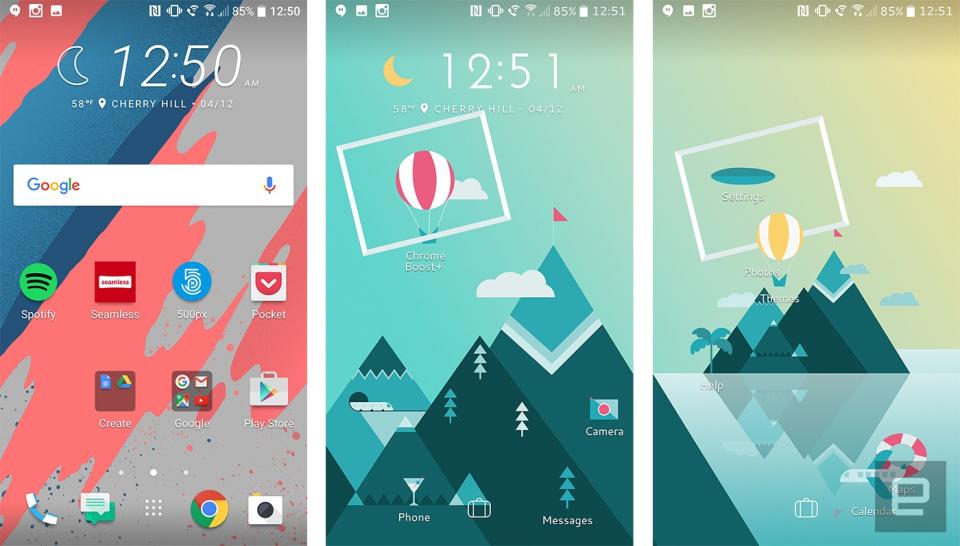The HTC 10 feels like the company's best smartphone in years
Is this the comeback we've been waiting for?

Between having to settle for a pair of merely average flagships and seeing the company's profits tank, HTC fans have had a rough time in recent years. As it turns out, though, HTC might have the cure for those woes (and no, I'm not just talking about the Vive). Though the surprise was spoiled, the company pulled back the curtain on its new HTC 10 smartphone today, and you know what? It feels like the HTC phone I've wanted for years.
First, the broad strokes. HTC is going to have 32GB and 64GB versions, but both have microSD slots that take cards as large as 2TB. While we're waiting on carrier pricing details, the unlocked version HTC costs $699/£569. Pre-orders for that start today. There's a 3,000mAh battery inside, which you'll recharge using the included rapid charger. (HTC says it draws heat out of the phone for even safer charging.) Flip the phone over and you'll find a 12-UltraPixel rear camera. Yeah, that's right, UltraPixels are back, but the sensor here is a big improvement over old-school HTC shooters. And, as you might've guessed, the 10 has a top-of-the-line, quad-core Snapdragon 820 chip paired with 4GB of RAM.

We've already seen that chipset/RAM combination in a handful of other high-end smartphones, but it's fascinating to see how different companies have built around it. While LG used it as the core for the modular G5, HTC put it at the heart of a much more refined device. The fit and finish here are damned stunning. A chamfered edge runs around the 5.2-inch, Quad HD Super LCD 5 display. Meanwhile, a more pronounced angle cuts around the 10's back, helping the phone settle really nicely into my hand. The effect is hard to deny: The HTC 10 is about 9mm at its thickest, though the all-metal frame tapers to a much slimmer three-millimeter edge. My favorite touch: The power button no longer wobbles in its socket! All told, last year's M9 wasn't that different from the M8, while the A9 felt like an iPhone, so the 10 seems like HTC's design at its best, if only because it clearly didn't phone it in this time.

HTC has always been a little nutty about audio, but the once-standard stereo front-facing speakers are still gone. Instead, the new BoomSound Hi-Fi system has a woofer in the bottom of the phone and a tweeter up top, so high and low frequencies come from above and below. I loved those silly stereo speakers and this new, mono approach isn't as eye-opening. Still, sound is loud and crisp -- which is more than I can say about most phone speakers.
Beyond that, the M10 upscales all audio to 24-bit quality, which should sound good on the included hi-res certified earbuds. And since all our ears are different (mine are terrible), HTC devised a test that defines your "personal audio profile." Once set up, most phone audio is tuned to your preferences. Oh, and HTC is licensing Airplay from Apple to stream audio to even more hardware. How's that for keeping an open mind?

The 10's software feels remarkably clean as well, particularly its Sense interface. Long story short, it feels closer to stock Android than ever before. HTC's little touches haven't completely vanished, though: BlinkFeed is still there waiting for you, and the location-based app suggestion widget is around too, though not on by default. And just like on the A9 and M9, you can install custom themes in case HTC's aren't to your liking.
This time, there's also a "freestyle" theme that breaks away from the traditional app grid. The one freestyle theme available gives you a beach background to play with, and the stickers you add (think: sunglasses, picture frames, boats and so on) can set to launch apps when tapped. It's not for me, but my little cousin sort of squealed when she saw it, so maybe HTC is onto something here. More importantly, HTC also killed some of its homebrew applications in favor of existing Google apps. At last, you're not stuck figuring out which preloaded email app is worth using. In at least one case, this working relationship led to a shift in Google's systems: Google Photos now supports RAW images since HTC's Photos app got the axe.

Then there are the little things. Like many high-end Android devices, the 10 uses USB Type-C to charge. (JBL is also working with HTC on a pair of high-res earbuds that connect through that port.) The fingerprint scanner is also seriously fast and rarely pesters me about trying again. So far, so good.
I'm trying not to be too hopeful here; my testing isn't done yet and it's possible the 10 will lose some of its sheen. Still, the fact that I have to actively manage my expectations is a pretty good sign: It's been years since an HTC phone got me this excited. Our full review is coming soon, so hang in there while we figure out if this is the One you've been waiting for.




















